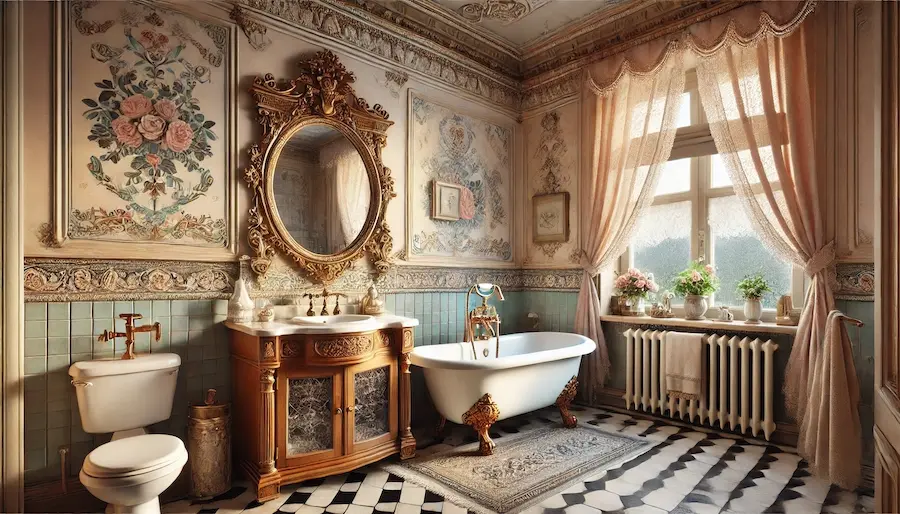Vintage bathrooms exude timeless elegance, blending historical charm with functional design. This article explores the origins, key features, applications, and considerations for incorporating vintage elements into your bathroom.
Introduction to Vintage Bathrooms
A vintage bathroom draws inspiration from design trends of the late 19th to mid-20th centuries, showcasing classic fixtures like claw-foot tubs, pedestal sinks, and ornate tile work. These spaces evoke nostalgia and sophistication, offering a retreat from modern minimalism.
History and Origins of Vintage Bathrooms
The evolution of vintage bathrooms reflects societal shifts and technological advancements:
- 19th Century: Indoor plumbing became more widespread, introducing fixtures such as porcelain claw-foot tubs and pedestal sinks. Bathrooms were adorned with rich colors and intricate details, emphasizing luxury and hygiene.
- Early 20th Century: The Art Deco movement introduced geometric patterns, bold color schemes, and chrome fixtures, adding glamour to bathroom designs. Subway tiles and hexagonal floor tiles became popular, emphasizing cleanliness and style.
- Mid-20th Century: The midcentury modern era embraced simplicity and functionality, with streamlined designs, pastel color palettes, and innovative materials. Bathrooms featured built-in vanities and tiled countertops, reflecting the era’s aesthetic.
Key Features of Vintage Bathrooms
Incorporating vintage elements can transform a bathroom into a classic sanctuary:
- Claw-Foot Tubs: These freestanding bathtubs are iconic, offering deep basins for luxurious soaks. Their ornate feet add a touch of elegance.
- Pedestal Sinks: With their clean lines and space-saving design, pedestal sinks bring old-world charm and are ideal for smaller bathrooms.
- Vintage Tile Work: Subway tiles, hexagonal floor tiles, and penny tiles in classic patterns contribute to a nostalgic ambiance. These tiles are durable and versatile, suitable for various design schemes.
- Antique Fixtures: Brass or chrome faucets, vintage lighting, and ornate mirrors enhance the historical aesthetic. These fixtures add character and authenticity to the space.
Applications of Vintage Bathrooms
Vintage bathroom designs can be adapted to various settings:
- Restoration Projects: Preserving original fixtures and designs in historic homes maintains architectural integrity. Restored vintage bathrooms can increase property value and appeal.
- Modern Homes: Introducing vintage elements adds character and warmth, creating a unique blend of old and new. This approach allows for personalization and timeless style.
- Commercial Spaces: Boutique hotels and restaurants often incorporate vintage bathroom designs to evoke nostalgia and enhance guest experience. These spaces become memorable highlights for visitors.
Considerations When Choosing Vintage Bathroom Elements
When designing a vintage-inspired bathroom, consider the following:
- Authenticity vs. Reproduction: Decide between sourcing antique fixtures or selecting modern reproductions that offer vintage aesthetics with contemporary functionality. Reproductions may provide better durability and ease of maintenance.
- Maintenance: Vintage materials may require special care; ensure you are prepared for the upkeep to maintain their appearance and functionality. Regular cleaning and appropriate products are essential.
- Integration with Modern Amenities: Seamlessly incorporate modern plumbing and electrical systems to meet current standards without compromising the vintage look. This ensures safety and convenience.
Conclusion
Vintage bathrooms offer a timeless appeal, combining historical elegance with modern comfort. By understanding their origins and thoughtfully selecting key features, you can create a bathroom space that reflects the charm of bygone eras while catering to contemporary needs.
